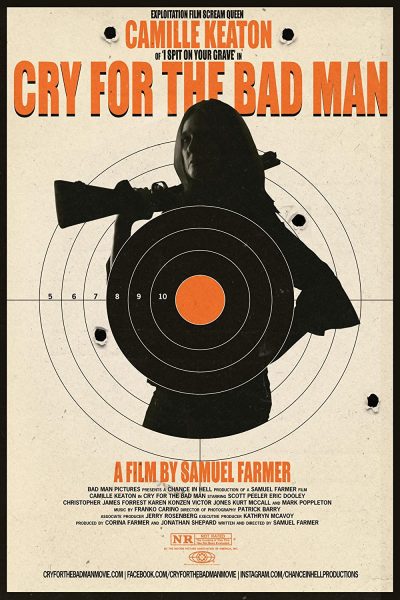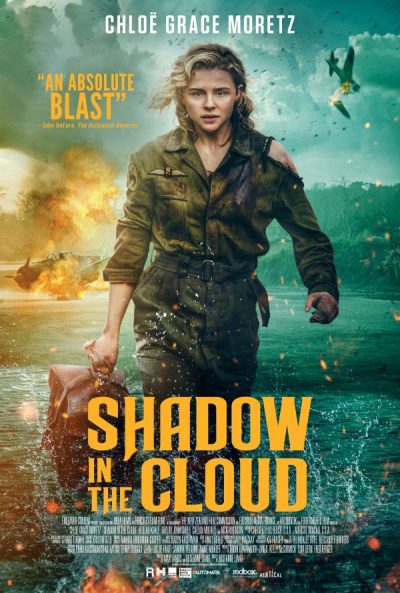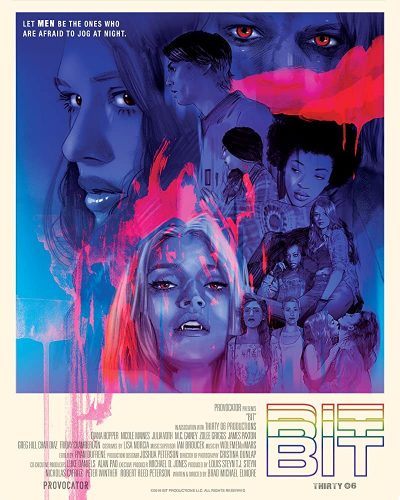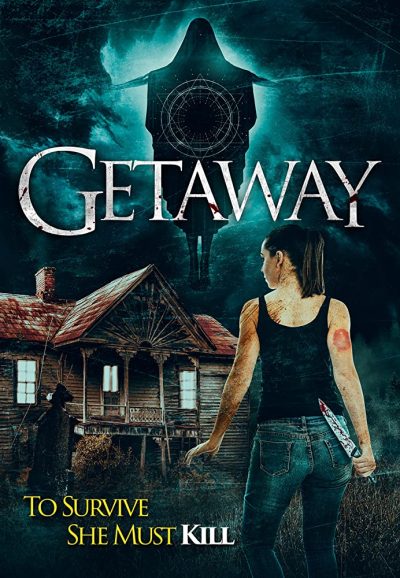★★★
“A video-game, trying to get out.”
 The daughter of the American ambassador is kidnapped, and is being held on an island off the Indonesian coast. Conventional attempts to stage a rescue mission end badly, and pressure from the US mounts on the government to do something. Colonel John (Thomas) is in charge, and comes up with a daring plan. Well, to be honest, the word “ludicrous” might be more appropriate, or perhaps that’s just me. He recruits ten models with a range of martial arts talents – silat, wushu, archery, etc. – and in five days, his tough-as-nails second in command, Major Cathy (Anderson) will lick them into a cohesive unit, which can infiltrate the island and mount a daring rescue. “Why do they have to be models?”, I hear you asking. Again, to be honest, this is never exactly explained. Still, for cinematic purposes, we’ll let it slide, since the intent is clear: it lets them kick ass, while looking good doing so.
The daughter of the American ambassador is kidnapped, and is being held on an island off the Indonesian coast. Conventional attempts to stage a rescue mission end badly, and pressure from the US mounts on the government to do something. Colonel John (Thomas) is in charge, and comes up with a daring plan. Well, to be honest, the word “ludicrous” might be more appropriate, or perhaps that’s just me. He recruits ten models with a range of martial arts talents – silat, wushu, archery, etc. – and in five days, his tough-as-nails second in command, Major Cathy (Anderson) will lick them into a cohesive unit, which can infiltrate the island and mount a daring rescue. “Why do they have to be models?”, I hear you asking. Again, to be honest, this is never exactly explained. Still, for cinematic purposes, we’ll let it slide, since the intent is clear: it lets them kick ass, while looking good doing so.
Any other questions? No? It’s for the best, trust me.
You should probably think of this as an Indonesian equivalent to DOA: Dead or Alive: cheesecake flavoured action, not to be taken seriously in the slightest. There are basically two section to this. The first is the group’s “boot camp,” which mostly consists of Major Cathy putting them through physical and psychological torment. There is a lot of yelling; I don’t know about you, but she certainly put the fear of God into me. Yet it’s also quite impressive, to have someone on the side of the heroines, who clearly doesn’t give a damn about being nice. There’s something almost admirable about her focus on the #SquadGoals, to the exclusion of everything else. Just don’t expect anything in the slightest as far as characterization of the “10” goes. For the vast majority, you’ll get a caption describing their skills, and that’s it.
The second half is almost one extended action sequence, depicting their rescue mission. It does slow down in the middle for a bit, after some of the team get captured. However, it then kicks back into gear for the final 15 minutes, and probably wisely, it saves the best for last. There’s a barn-storming battle, in an increasingly-flooded warehouse, pitting the best of the government forces against the best of the terrorist. The latter include their leader – technically called Paul, but whom should really be called Mr. Shouty, for his habit of YELLING EVERY LINE HE HAS TO DELIVER – and his sidekick, the tall, blonde Jane (Zavialova), whose skills are quite impressive.
As the tag-line at the top suggests, this feels more like an adaptation of a console beat-em-up. In it, you would be able to select one of the ten trainees, taking them through a series of missions under Major Cathy, which let you earn skill points which can be applied to your abilities. You then get to use these as you land on the island, battle your way across, and finally, defeat Jane and Paul to rescue the ambassador’s daughter. I can feel my thumbs twitching. But as a movie? It’s a rather imperfect 10.
Dir: Helfi C.H. Kardit
Star: Karenina Maria Anderson, Jeremy Thomas, Roy Marten, Svitlana Zavialova





 Born as Maya, the heroine here adopted the name of “Jet” when she became part of a seriously black ops group, part of the Israeli intelligence service known as the Mossad. There, she and her colleagues had carried out thoroughly deniable operations against… well, supposedly Israel’s enemies, though it’s not as if she asks questions. The secrecy wasn’t limited to her work, as she carried on an unsanctioned relationship with David, the man in charge of the group. But eventually, it all became too much: with David’s assistance, Jet faked her own death on a mission and vanished off the grid, re-appearing as “Carla” in Trinidad, where she enjoyed a quiet life for several years. That came to a sudden end when assassins make an attempt to terminate her new identity. Her cover has clearly been blown. The questions are: what happened, who is responsible, and how can Maya a.k.a. Jet a.k.a. Carla restore the balance?
Born as Maya, the heroine here adopted the name of “Jet” when she became part of a seriously black ops group, part of the Israeli intelligence service known as the Mossad. There, she and her colleagues had carried out thoroughly deniable operations against… well, supposedly Israel’s enemies, though it’s not as if she asks questions. The secrecy wasn’t limited to her work, as she carried on an unsanctioned relationship with David, the man in charge of the group. But eventually, it all became too much: with David’s assistance, Jet faked her own death on a mission and vanished off the grid, re-appearing as “Carla” in Trinidad, where she enjoyed a quiet life for several years. That came to a sudden end when assassins make an attempt to terminate her new identity. Her cover has clearly been blown. The questions are: what happened, who is responsible, and how can Maya a.k.a. Jet a.k.a. Carla restore the balance? Despite a very brief running time of only 70 minutes, this still manages to seem talky and overlong. That’s a shame, as it manages to waste a good performance from a genre veteran, playing an action heroine who is not your typical one. The former is Camille Keaton, who is having a bit of a B-movie renaissance in her career, forty years after starring in the notorious rape-revenge film, I Spit on Your Grave. And the latter? Well, Keaton is now in her seventies, but based on this, is still capable of wielding a mean shotgun. And clearly, of taking no shit from anyone. Indeed, you could almost read this as the sundown years of her Grave character, Jennifer Hills.
Despite a very brief running time of only 70 minutes, this still manages to seem talky and overlong. That’s a shame, as it manages to waste a good performance from a genre veteran, playing an action heroine who is not your typical one. The former is Camille Keaton, who is having a bit of a B-movie renaissance in her career, forty years after starring in the notorious rape-revenge film, I Spit on Your Grave. And the latter? Well, Keaton is now in her seventies, but based on this, is still capable of wielding a mean shotgun. And clearly, of taking no shit from anyone. Indeed, you could almost read this as the sundown years of her Grave character, Jennifer Hills. This is the kind of film which I’d say was enjoyable, rather than being good. Indeed, if you want an illustration of the difference between the two, this movie is a good example. Sona Mukherjee (Fernandez) is the wife of respected doctor, Mrityunjoy Mukherjee (Bajpayee). But their life is upended when the bodies of six, formerly pregnant, unmarried women are found on their property. Sona believes her husband was framed – possibly by police inspector and former boyfriend Imran Shahid, (Raina). She takes the advice of a dubious lawyer, who suggests that if the serial killer was shown to be still active, that would prove her husband’s innocence. So Sona kidnaps another expectant young woman, Anushka Tiwari (Khan) to provide a seventh victim. Only… well, Sona is a bit crap as a serial killer, and Anushka is a feisty little thing with a black-belt in taekwondo, pregnancy be damned.
This is the kind of film which I’d say was enjoyable, rather than being good. Indeed, if you want an illustration of the difference between the two, this movie is a good example. Sona Mukherjee (Fernandez) is the wife of respected doctor, Mrityunjoy Mukherjee (Bajpayee). But their life is upended when the bodies of six, formerly pregnant, unmarried women are found on their property. Sona believes her husband was framed – possibly by police inspector and former boyfriend Imran Shahid, (Raina). She takes the advice of a dubious lawyer, who suggests that if the serial killer was shown to be still active, that would prove her husband’s innocence. So Sona kidnaps another expectant young woman, Anushka Tiwari (Khan) to provide a seventh victim. Only… well, Sona is a bit crap as a serial killer, and Anushka is a feisty little thing with a black-belt in taekwondo, pregnancy be damned. This falls victim to the Spielberg Effect. By that, I mean, that any movie directed by Steven Spielberg will inevitably become the yardstick by which future entries of that kind are judged – typically, unfavourably. Killer shark films will be compared to Jaws. Holocaust epics to Schindler’s List. And the genre of movies in which drivers are menaced by unseen truck drivers? Expect comparisons to Duel. And in this case, they are entirely warranted. I guess if you’ve never heard of Duel, this might just pass muster. But you would still be better off watching it, than this lame imitation, which has a nice car (a Mustang) and some lovely scenery (I’m guessing Canadian). That’s all it can offer though.
This falls victim to the Spielberg Effect. By that, I mean, that any movie directed by Steven Spielberg will inevitably become the yardstick by which future entries of that kind are judged – typically, unfavourably. Killer shark films will be compared to Jaws. Holocaust epics to Schindler’s List. And the genre of movies in which drivers are menaced by unseen truck drivers? Expect comparisons to Duel. And in this case, they are entirely warranted. I guess if you’ve never heard of Duel, this might just pass muster. But you would still be better off watching it, than this lame imitation, which has a nice car (a Mustang) and some lovely scenery (I’m guessing Canadian). That’s all it can offer though.

 Eva Destruction – and, yes, that
Eva Destruction – and, yes, that  There are times when I am bracing myself, going into a movie. Here’s the synopsis for this one: “A transgender teenage girl on summer vacation in Los Angeles fights to survive after she falls in with four queer feminist vampires, who try to rid the city’s streets of predatory men.” Given my long-standing aversion to message movies, this seemed like 90 minutes of my worst nightmare. What had I let myself in for? But this proved to be surprisingly accessible – even for those of us who are neither transgender nor queer, and are enrolled in the Camille Paglia school of feminism.
There are times when I am bracing myself, going into a movie. Here’s the synopsis for this one: “A transgender teenage girl on summer vacation in Los Angeles fights to survive after she falls in with four queer feminist vampires, who try to rid the city’s streets of predatory men.” Given my long-standing aversion to message movies, this seemed like 90 minutes of my worst nightmare. What had I let myself in for? But this proved to be surprisingly accessible – even for those of us who are neither transgender nor queer, and are enrolled in the Camille Paglia school of feminism. This was likely not going to qualify for inclusion here, until a twist in the final 15 minutes. Up until that point, it had been a largely irritating saga, that was considerably more horror than action heroine – and not even good horror at that. I’m still significantly unconvinced about the quality, but must grudgingly admit, this was a twist which I did not particularly see coming (though there is a large clue dropped near the beginning). Three gal-pals, Tamara (Betham), Maddy (Taylor-Compton) and Brooke (Allbright) head for a weekend’s lakeside R&R. On the way, Tamara’s car runs out of fuel, and she encounters the local creeps, but eventually arrives, and joins the other two in scamming drinks out of horny guys.
This was likely not going to qualify for inclusion here, until a twist in the final 15 minutes. Up until that point, it had been a largely irritating saga, that was considerably more horror than action heroine – and not even good horror at that. I’m still significantly unconvinced about the quality, but must grudgingly admit, this was a twist which I did not particularly see coming (though there is a large clue dropped near the beginning). Three gal-pals, Tamara (Betham), Maddy (Taylor-Compton) and Brooke (Allbright) head for a weekend’s lakeside R&R. On the way, Tamara’s car runs out of fuel, and she encounters the local creeps, but eventually arrives, and joins the other two in scamming drinks out of horny guys.